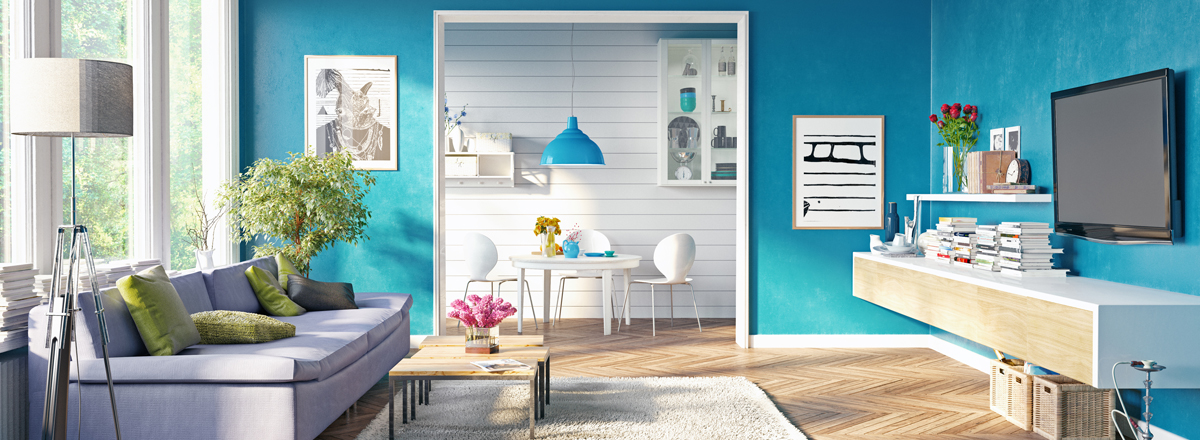
How to Choose an Accent Wall Color
You don’t have to be an interior designer or decorator to choose a color and paint an accent wall in your home. We'll simply teach you how to apply the same simple rules that the experts use when working with color and paint - and let your home’s architecture determine what wall to accent.
Listen to the Architecture's Accent (Color)
Choosing the right wall for that special splash of color is the first step. The wall to accent is generally the first thing you see when you walk into the room. It may have distinctive architectural features or placements such as a built-in bookcase, a wainscoting, a fireplace or an architectural nook. It could be the anchor wall behind the bed in a bedroom. If you select the wrong wall to accent, it can throw off the balance and harmony of the room.
Account for the Room’s Purpose
Color psychology experts claim color has an effect on people – and it does. The advertising industry has tapped into the effects of color for decades. Some colors convey a lot of energy – red, for instance. The reason red is used for stop signs, fire engines and stoplights is because it represents danger. As the color of blood, war and passionate energy, red is known to stimulate the metabolism while increasing heart and respiratory rates. This is why red doesn’t make a good choice as an accent wall in a bedroom and exactly why it would work better in the kitchen. Think about the room’s purpose and the mood you want to create when choosing a color for an accent wall.
The 60-30-10 Accent Wall Color Rule
Don’t let the wide array of paint colors overwhelm you when choosing a color for your accent wall. Avoid it by developing a color scheme for the room that uses the "60-30-10 rule." Here's how it works:
- 60% of the room, including its painted surfaces and decor, represents your dominant color choice
- 30% is applied to a secondary color
- 10% is for the accent color
You can test three accent wall colors by painting them in three-by-three foot squares on the chosen wall. Then watch them in the changing light of day to choose the one that suits you and your best home.
Pay Attention to Color Saturation
A harmonious color scheme also takes into consideration the color’s saturation level as part of the design. Color theory suggests using a tint as the dominant color in the room, a toned color as the secondary color, with your accent color being the most vivid and pure hue of the three. Tints have white added to them, while toned colors have been muted with gray. This theory suggests making the accent wall the darkest or most vivid color in the room, accented by area rugs, throw pillows or other decor items that integrate the color and balance it throughout the space. Paint the room and the accent wall with a Wagner FLEXiO Paint Sprayer to cut painting time in half so you can spend less time working and more time enjoying your newly-painted room.
See More Projects
Download project steps & shopping list
We'll never share your email with anyone else.